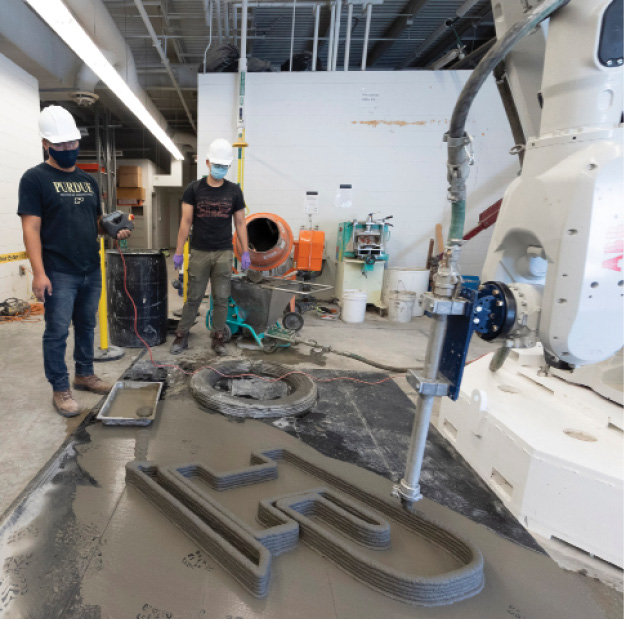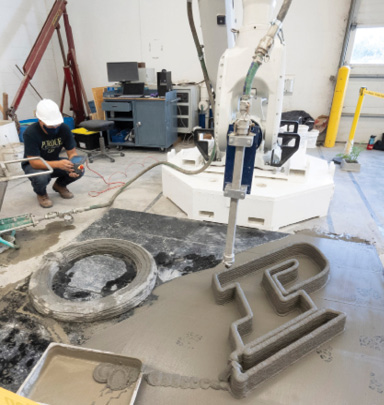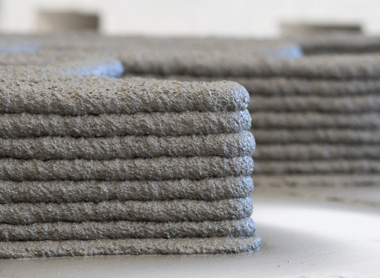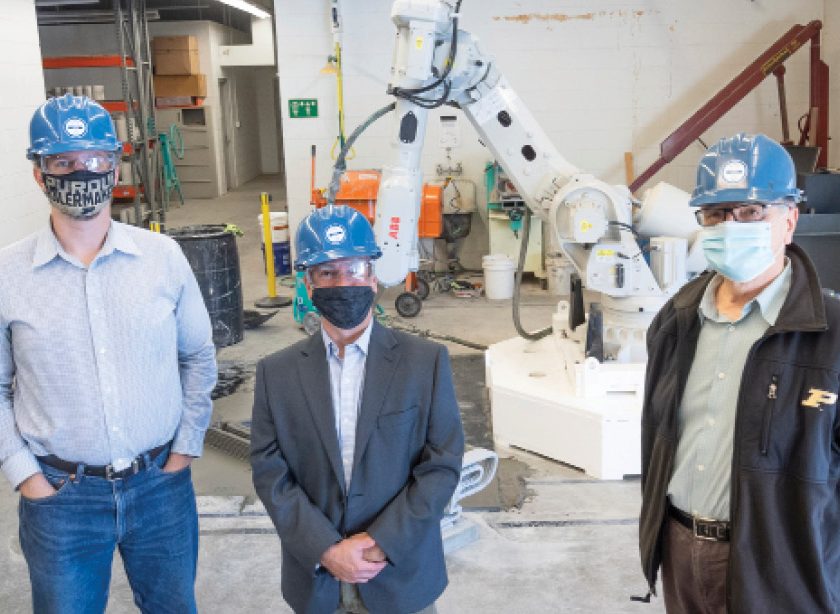
A National Science Foundation Phase I Small Business Technology Transfer grant is supporting development of 3D-printed concrete alternatives to traditional steel anchors for offshore wind turbines. RCAM Technologies, with U.S. and U.K. offices, will test its concrete anchor concept in West Lafayette, Ind. at the Purdue University College of Engineering’s Robert L. and Terry L. Bowen Laboratory for Large-Scale Civil Engineering Research. RCAM representatives will assist Purdue Lyles School of Civil Engineering faculty who are serving as lead investigators.
“Our concrete, 3D-printed suction anchors will reduce the cost of anchors by up to 90 percent compared with traditional drag anchors when used in a shared mooring configuration,” says RCAM Director of Operations Gabriel Falzone. “Suction anchors can accept loading in multiple directions, which allows them to be connected to multiple turbines. This can reduce the number of anchors required per plant.” Traditional steel anchors, he adds, are costly, carbon-intensive and require large vessels for installation.
“3D printing can be overhyped, as in many instances it is a more expensive way to make something worse,” notes Purdue School of Materials Engineering Jeffrey Youngblood, who is joining Lyles School colleagues in the investigation. “3D printing shines where labor costs are high and structures are unique and/or complex. Here, it has the chance to really make an impact, as construction is labor-intensive, and this particular design would be difficult with other methods.”
The NSF-backed research will focus on 3D printing processes at larger scales, notes Lyles graduate student Fabian Rodriguez. “Being able to understand the behavior of cementitious materials in different 3D-printing systems allows us to have a clear idea of the physical characteristics and quality of the materials that we want to use for large-scale construction in marine environments,” he says. “The robotic system will allow us to produce larger elements on which we can evaluate properties such as their strength and durability.”


“Marine conditions mean exposure to elevated levels of chlorides that can chemically react with the hydrated cementitious matrix and potentially negatively impact the durability of the anchor,” observes Lyles’ Jan Olek, the James H. and Carol H. Cure Professor in Civil Engineering. “We are looking into the microstructure of concrete created during the layer-by-layer deposition process. We want to know how it influences the permeability and rate of ingress of chlorides into the printed element and to assess impact on durability.”
The RCAM research is a great example of academia-industry collaboration, affirms Lyles colleague Pablo Zavattieri, the Jerry M. and Lynda T. Engelhardt Professor in Civil Engineering. “We share know-how and equipment, and yet we work together toward developing a new technology that has the potential to enable novel and more efficient ways to build structures,” he explains. “This collaboration allows us to build these unique capabilities here at Purdue.”
“Working with Purdue has accelerated commercialization and provided us with access to critical expertise and facilities,” RCAM’s Falzone concludes. “Purdue’s expertise in concrete durability and structural testing is some of the best in the world.”
Steve Martin writes for the Purdue Research Foundation in West Lafayette, Ind., home to the main Purdue University campus.
